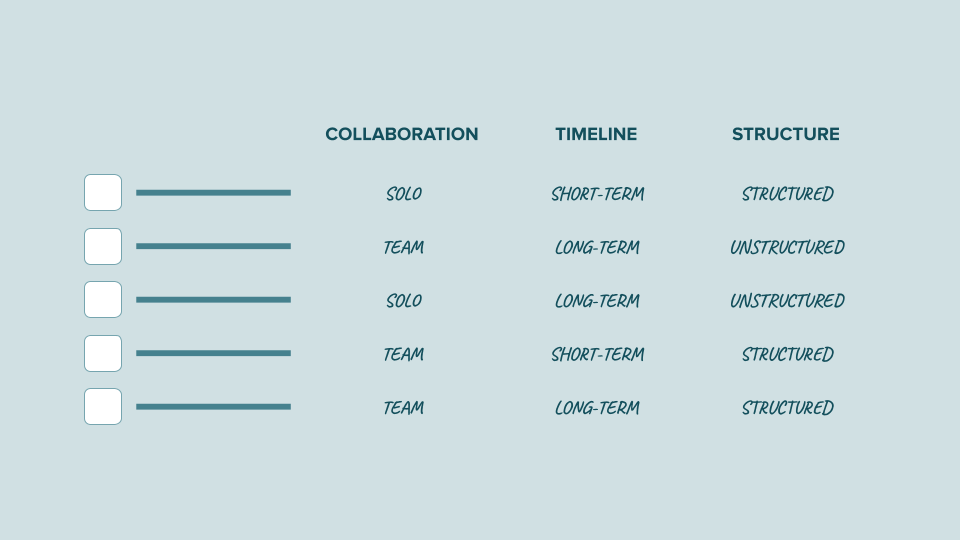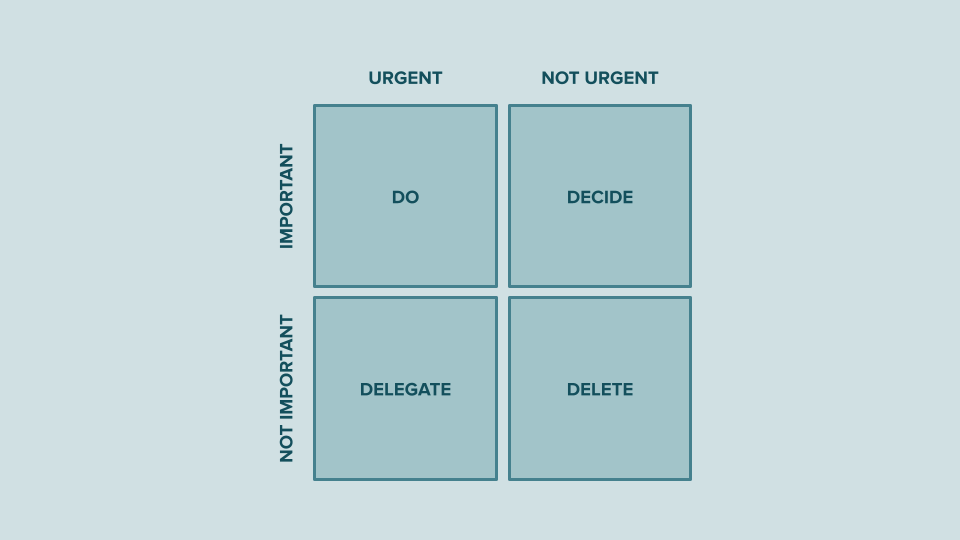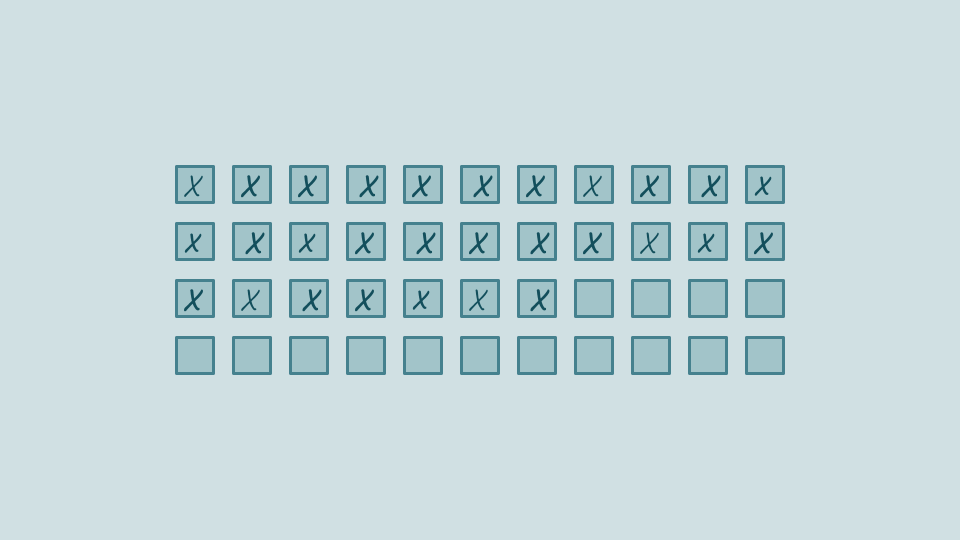Every year, dozens of new productivity systems pop up, each of them promising a more efficient, better way to work. And, every day, people try one of these new systems in the hope of better managing their work as well as their mental health. Talk to any knowledge worker and they will have tried at least one of the most popular productivity methods out there — with or without success. The question is: is there really a perfect productivity system?
Let’s cut to the chase: there is no universally perfect productivity system. A system that works for a hyperactive young developer pursuing a degree on the side won’t work for a director of operations with three kids. Someone working from home may need a different system than someone commuting to work. An early bird will have a different work schedule from a night owl. And that’s alright.
Instead of wasting time trying to copy-and-paste a system from a self-help book, everyone should intentionally design a system that works for them, based on their goals, their personality, and their obligations. But it doesn’t mean we need to reinvent the wheel and design our system from scratch. We can pick-and-choose from existing systems and add our own touches so we can build on the shoulders of productivity giants.
The most popular productivity systems
It would be an impossible task to list all the productivity methods out there, but there are several popular ones that may inspire you in designing your own system. Some of them aim to offer a full productivity toolbox, whereas others are more akin to a single tool you can use when needed. While you read the list, write down the ones that resonate the most with you.
Getting Things Done
Created by David Allen, GTD for short is one of the most popular productivity systems out there. It consists in getting your thoughts and tasks and to-dos all out of your head to organise them all into manageable tasks. GTD uses several stages to deal with tasks: capture, where you add anything that’s on your mind to your list, like a brain dump; clarify, where you break down tasks into smaller, manageable steps; organise, where you prioritise and categorise your tasks; reflect, where you regularly refine your tasks; and engage, where you actually tackle your task list. You can learn more about the GTD method by watching David Allen’s TED talk.
Zen To Done
If you have tried the GTD system but find it difficult to stick to, you may want to try the Zen to Done system. Created by Leo Babauta, ZTD focuses on one habit at a time, with a little bit more structure and simplicity. It’s based on a list of habits which you can adopt in whichever order fits you best, including collect, process, plan, do, organise, review, and simplify. Leo Babauta also designed an even simpler version, called Minimal ZTD.
The Pomodoro Technique
Best for people who get easily distracted, the Pomodoro technique helps you maintain your focus by splitting your work into short sessions using a timer. Traditionally, the work sessions are 25-minute long followed by a 5-minute break, but you can experiment with other time structures. Most people install a timer on their laptop to use this productivity technique.
Time Blocking
It’s easy to waste a lot of time switching between tasks without making enough space to tackle big projects. Time blocking is a great way to stay accountable throughout the workday by dedicating chunks of time to specific goals, while ensuring you take enough breaks to manage your mental energy. You don’t even need to install a specific app: just block time in your existing calendar app. Time blocking is a simple tool that’s compatible with many other productivity systems.
The Eisenhower Matrix
Sometimes, our task list is so long, it’s hard to decide where to start. The Eisenhower Matrix is a simple productivity tool to prioritise your tasks based on whether they are urgent and important, important but not urgent, urgent but not important, or neither urgent nor important. You can then decide to either do it now, schedule it to be done later, delegate it, or just delete it.
The Moscow Method
Another way to prioritise your tasks is the Moscow Method, which consists in listing all your tasks and categorising them as a Must, Should, Could, or Won’t — hence the “moscow” acronym for this productivity method. Must tasks are non-negotiable and need to be tackled today; Should tasks are pretty important, but can wait until tomorrow if needed; Could tasks are not urgent, but why not tackle them if you are particularly productive and have some energy left at the end of the day. Finally, Won’t tasks are the ones you will delete from your to-do list.
The Kanban Method
Another way to stay accountable when managing projects is to use a Kanban board. Just create three columns and split your tasks between: To Do, Doing, and Done. A Kanban board can help you be more productive in three different ways.
- Prioritising what to work by making your to-do list visible in the “To Do” column.
- Limiting your work in progress by keeping the “Doing” column to three items maximum.
- Learning from your past work by reviewing your “Done” column and improving your process.
Don’t Break the Chain
Also called “Non Zero Days”, this method consists in marking an X in your calendar over each day you accomplish your goal. Don’t Break the Chain was made popular by Jerry Seinfeld, who would write a joke every single day — no matter how inspired he felt — and marked it in his calendar. Whenever he felt like skipping a day, he would look at the long chain of Xs to motivate himself. On its own, it’s unlikely to constitute a perfect productivity system: Don’t Break the Chain works best to create new habits, but it won’t help you define your priorities or manage your time. Which is fine, you can incorporate it as part of a larger productivity system!
There are of course many, many more productivity systems and tools out there, but these are some of the most popular. Once you have explored the principles behind several productivity systems, you can extract the aspects that will fit the way you work.
Designing your perfect productivity system
Before you can start designing your productivity system, do a quick audit of your tasks. Go through the list and ask yourself:
- Are these tasks solo or collaborative? Whether you will need to work with a team to complete a task will have an impact on how much freedom you have when building your productivity system.
- Are these short-term or long-term goals? Some productivity methods work best for short-term, high-energy tasks, while others are better to build long-term habits and achieve ambitious goals.
- Are they structured or unstructured tasks? Work is often a mix of exploration, where we cultivate our creativity to come up with innovative ideas, and exploitation, where we cultivate our productivity to efficiently execute on these ideas. Both modes of work require different levels of structure.

This exercise will help you consider various productivity tools and methods based on your own situation, rather than blindly applying a pre-made system. Ideally, a perfect productivity system should have the following characteristics:
- It’s sustainable. The more friction and effort, the less likely you are going to stick to your productivity system. How do you feel after a day using a system? If you are exhausted, chances are it’s not working for you. Friction and effort can come from the system itself — do you need a ten-step method to tackle a simple task? —or from the tools you use — do you really need this fancy app when a good old notebook would do the job? A sustainable productivity system should feel natural, a system that helps you rather than a system that burdens you.
- It works for short-term and long-term goals. If your productivity system is a toolbox, it should contain tools that work for different timelines. The Pomodoro technique is great to stay focused and get a lot done in short bursts of time, but it won’t help you decide what to work on and how to spend your time. The Eisenhower Matrix and the Moscow Method will help you prioritise your task list, but they won’t help you deal with short-term procrastination. Include a mix of tools in your toolbox so you can achieve both your short-term and long-term goals.
- It works for structured and unstructured work. Great work is a balance of creativity and productivity. While project management and team collaboration often requires some form or structure, you need to keep enough space for inspiration and idea generation. For instance, time blocking can be a great tool to make sure you protect that space.
- It takes your mental health into account. In order to be sustainable, support your long-term goals, and help maintain your creativity, a productivity system should include tools to manage your mental health. Taking breaks, ensuring you have time for non-work activities, journaling, blocking time for exercising… There are many ways to inject a bit of mental wellness into any productivity system. Just make sure you don’t overwork yourself: everyone needs to relax and recharge to do their best work.
- It makes space for self-reflection. Finally, we should avoid applying the same productivity principles over and over again without ever asking ourselves whether they are actually working or not. A good productivity system includes regular reviews where we can reflect on our past work and tweak our processes for continuous improvement. These reviews can consist in looking at your calendar and task lists for the past week, re-reading the notes you took, or simply thinking back on what you achieved and the challenges you faced.
Using these guidelines, you can combine several methods to design your perfect productivity system. You may want to combine the Moscow Method to prioritise your tasks, time blocking to structure your days, the Pomodoro technique to stay focused, and a weekly review such as Plus Minus Next journaling for self-reflection. You may want to use the Kanban Method to stay on top of design projects, combined with Don’t Break The Chain to build your creativity muscle. Or you might just go with a more structured method such as Get Things Done, sprinkled with some daily journaling to reflect on your progress and hurdles.
You may be wondering: what about productivity apps? Of course, the right app can make us more productive, but this step should come last in designing our own productivity system. Sometimes, some simple post-it notes will do the job. Other times, we will need a dedicated app, for example to take notes and build a knowledge base, or to add a timer to our screen. Our tools should fit our systems, not the other way around.
Whatever system you design for yourself, remember that it doesn’t have to be fixed. Of course, it’s better to stick with a system long enough to know whether it’s working for you, but if after a few weeks you notice the system is either not sustainable or doesn’t fit your goals, you can always tweak it and keep on improving it. That’s why self-reflection is key to productivity.


